Drop us a short note with your inquiry by filling out the contact us form.
This "how-to-connect" documentation will explain the initial configuration of an example connection from Finance and Operations to a SharePoint Online List in Office 365. We will be synchronizing data stored in Finance and Operations.
This guide presupposes that you have installed the Layer2 Cloud Connector and that you are familiar with its basic functionality. The Layer2 Cloud Connector User Documentation will provide you with all necessary information.
2. Configuring the Layer2 Cloud Connector
2.2 Configuring the Data Entity 1
2.3 Configuring the Data Entity 2
To connect to Microsoft Dynamics 365 Finance and Operations go to your Azure portal and click on Azure Active Directory / App registrations to a new application registration.
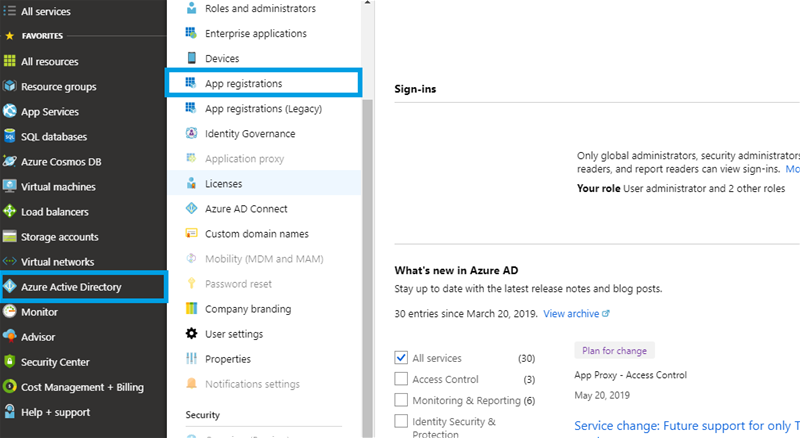
Give your application a name, set the Supported account types and your Redirect URI. Click on Register.
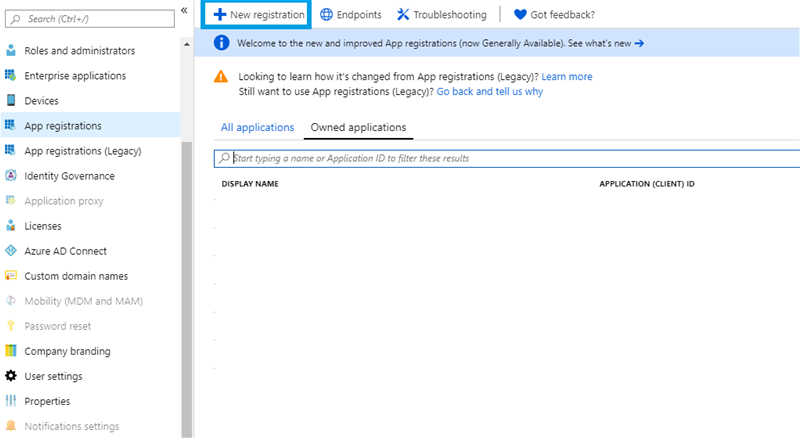
Open your application and copy the Application (client) ID value.
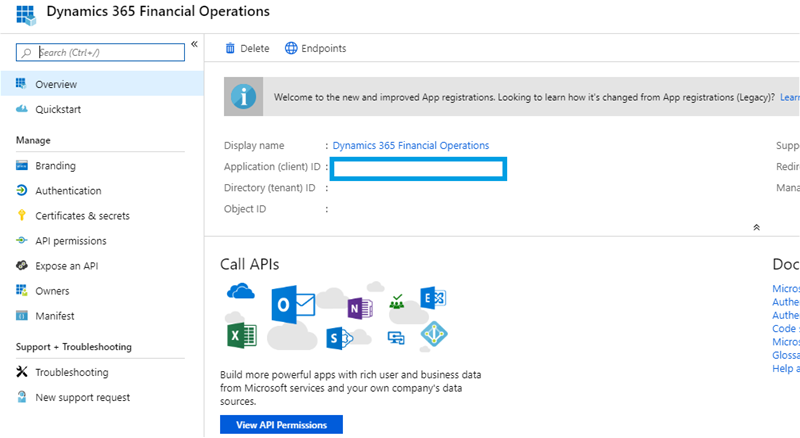
Go to Authentication set your callback URL. Scroll the page down and check Access tokens under Implicit grant.
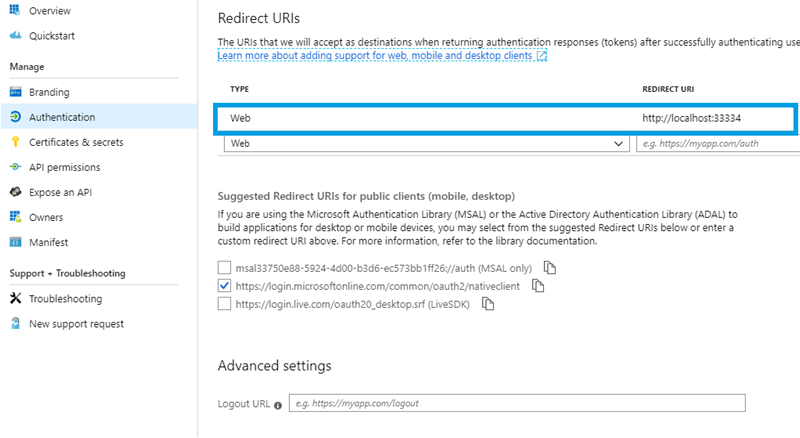
Go to Certificates & secrets to generate a New client secret. Copy this value.
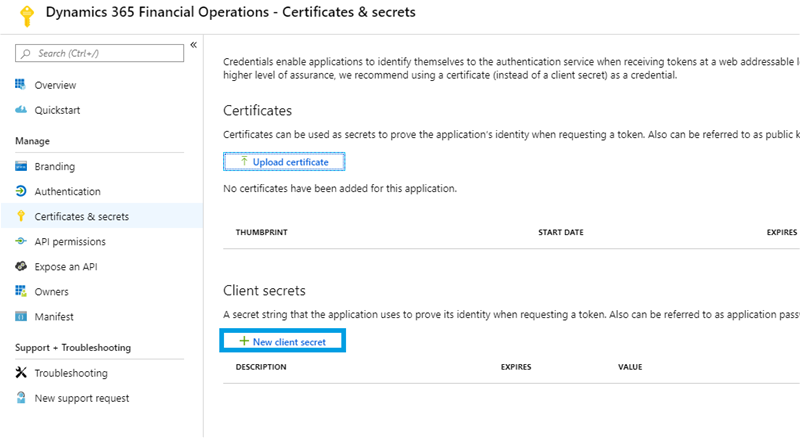
Under API permissions, click on Add permission and set these permissions:
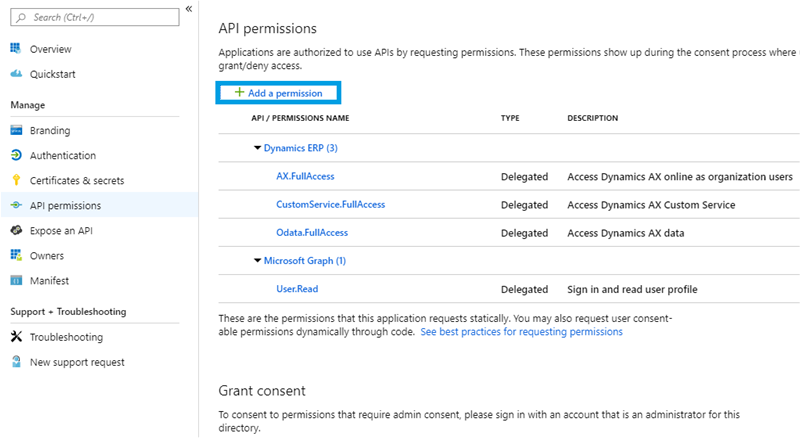
Create a new connection by using the Create New Connection option in the Actions pane (right-hand side). The new connection will appear at the bottom of the Connection Manager List (left-hand side). Click on your newly created connection to open the connection configuration settings.
Choose a meaningful name for your connection and replace the current "New Connection" Connection Title with it.
Connections to Finance and Operations can be uni-directional only. An initial connection should always be uni-directional to assure that both data entities are identical. Therefore, choose Left to Right as Direction.
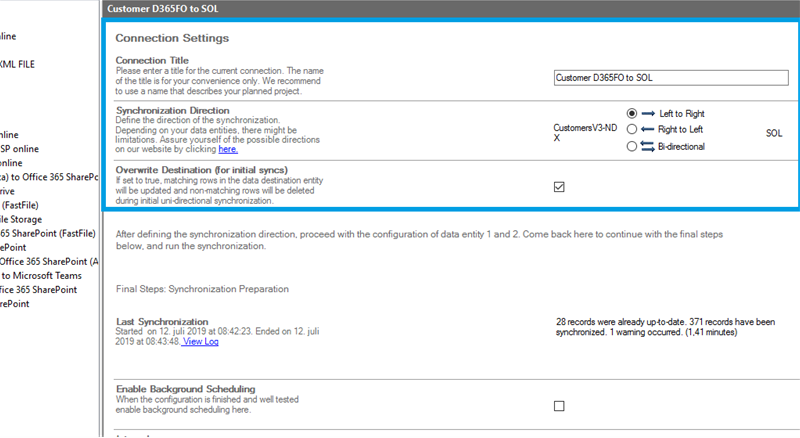
We will now set up our Data Entities. Go to the data entity “Data Entity 1” to open the configuration settings.
Choose a Data Entity Title. It is recommended to give your entities meaningful names to maintain an overview when you decide to set up multiple connections.
Select the Data Provider for OData from the data provider list. You can search for OData by typing into the selection box.

For the Connection String, we need the information mentioned in step 1. You can copy the below connection string and adjust it to match your gathered information. Use the Verify Connection String option to evaluate if the provided connection string is valid.
URL=https://yourcompany.ax.dynamics.com/data;Authentication=OAuth2;ClientId=yourclientid;ClientSecret=yourclientsecret;Scope=openid offline_access;AuthorizeEndpoint=https://login.windows.net/yourcompany/oauth2/authorize;TokenEndpoint=https://login.windows.net/yourcompany/oauth2/token;Port=yourport; ResourceUri=https://yourcompany.ax.dynamics.com;
The Select Statement text box is used to define specific data queries. We will be gathering all CustomerAccount and EmployeeResponsibleNumber from our table Customers. You can copy the below select statement and adjust it to match your needs. Save your changes by using the right-hand pane option Save Changes.
SELECT CustomerAccount, EmployeeResponsibleNumber FROM Customers
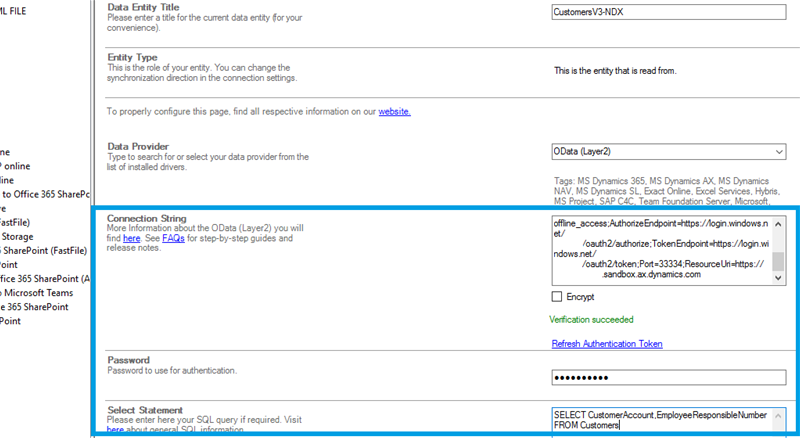
To check if all necessary columns are received, you can use the Preview Data option on the right-hand pane which will provide you with a pop-up window showing your sample data from your Finance and Operations entity.
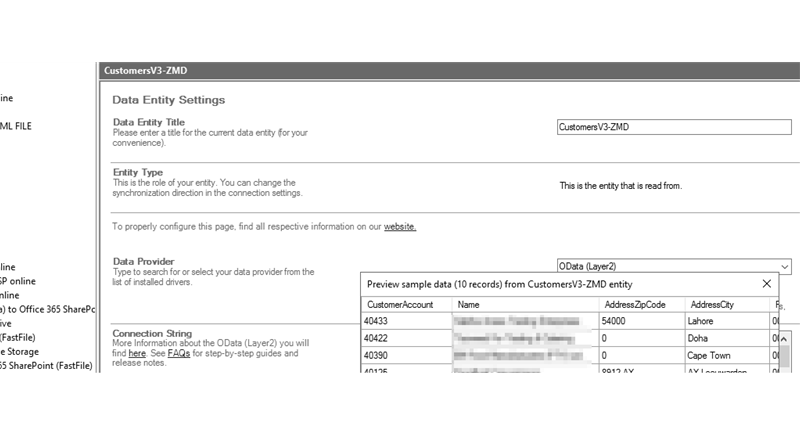
2.3. Configuring the Data Entity 2
We are going to send the data to a custom SharePoint Online list. It's required that you set up this list prior to the next steps. Your list should contain matching columns according to your source entity.
Use the left-hand pane to switch to the data entity "Data Entity 2". We will be using the Layer2 SharePoint Provider for this setup.
For more information about the SharePoint provider visit:
https://www.layer2solutions.com/support/cloud-connector-faqs/layer2-csom-sharepoint-ado-net-provider.
You can copy the below Connection String which contains the minimum of required properties to connect to your custom SharePoint Online list.
URL=https://your_custom_sharepoint_list_url/AllItems.aspx;Authentication=Office365;User=User@domain.com;
Enter the password that belongs to the user account used in the connection string into the Password field. Save your changes by using the right-hand pane option Save Changes.
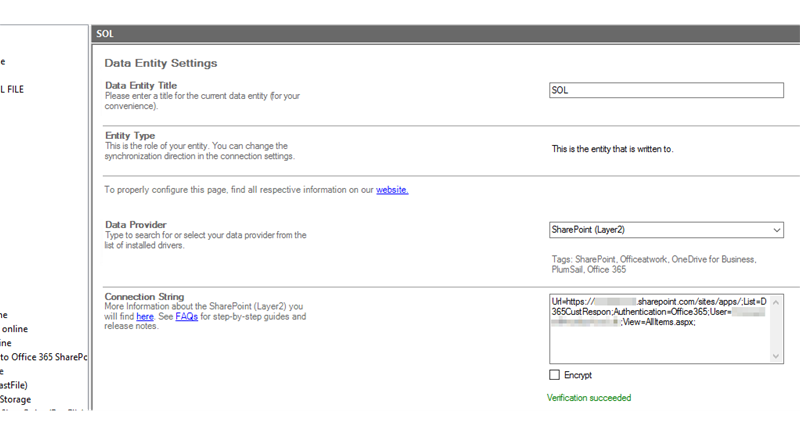
In the next step, we will configure our mapping settings. Click on the Mappings option on the left-hand pane. If your fields from SharePoint are named identical to the fields from your source system, the Enable Auto Mapping option will match those columns. Disabling this option allows you to match your columns as needed. We enabled auto-mapping in our setup. Save your changes by using the right-hand pane option Save Changes.
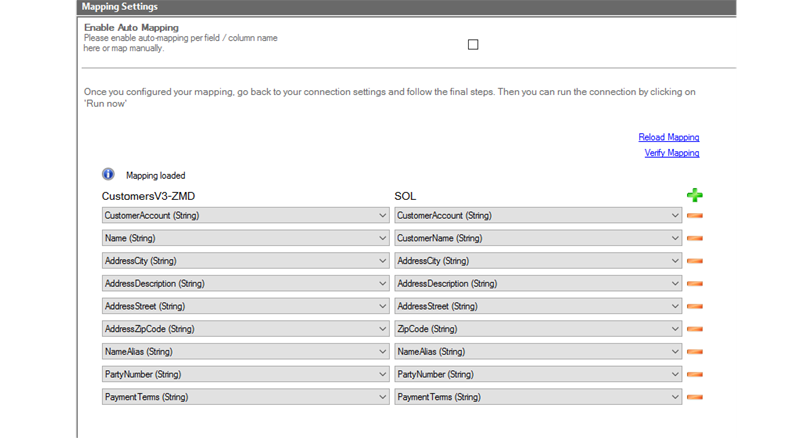
To run your connection switch back to the main connection configuration node and use the Run Now Button located on the bottom of the setup page. The Run Synchronization Toolbox will also display the synchronization process.
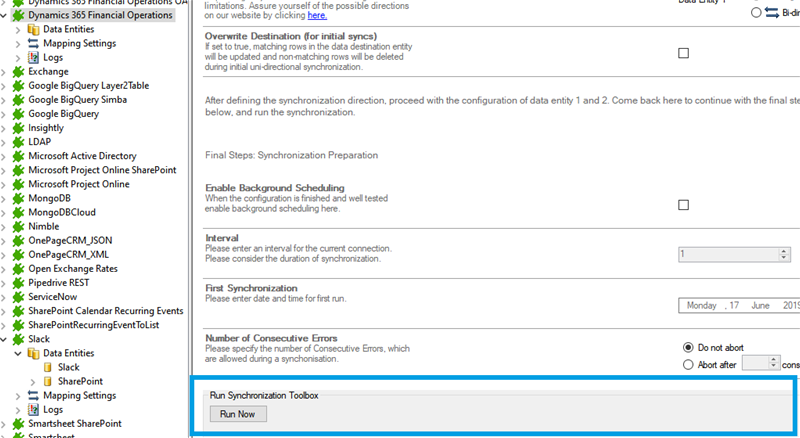
Below is a data preview of the information we accessed in our source entity:
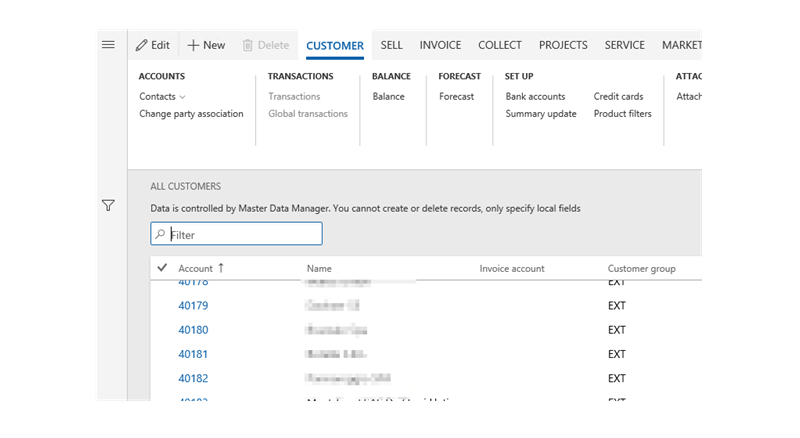
This will be the result in our SharePoint Online list after our initial successful synchronization:
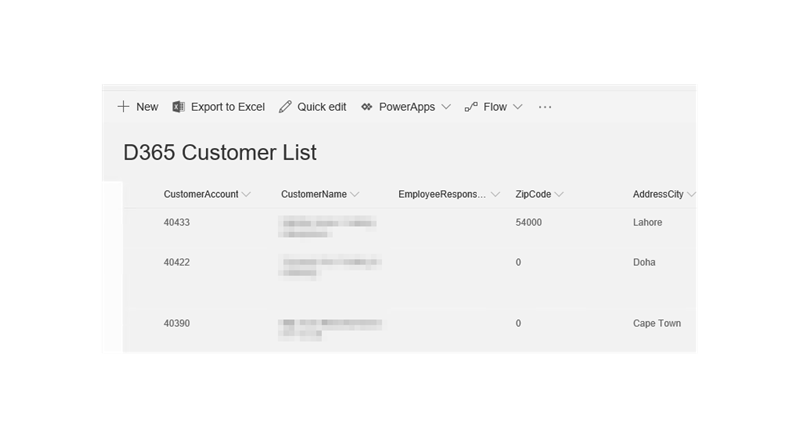
See section 3.1 for further information.
As far as tested, this connection supports uni-directional only.
Check the API for information about the available tables.
You can create your own data entities from a table. See here for more information.
If you want data from other companies the application has access to, you can set the parameter ?cross-company=true after the data parameter in the URL in your connection string. You can read about it here.